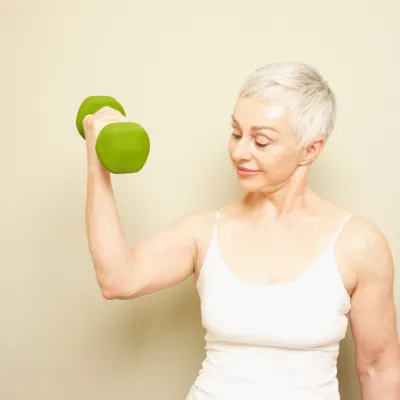
Why Running Isn't the Answer: A Better Path to Weight Loss After 40
Why Running Isn't the Answer: A Better Path to Weight Loss After 40
You lace up your running shoes with the best intentions. Maybe you've signed up for a 5K or committed to morning jogs around the neighborhood. Running seems like the obvious choice for weight loss – it's simple, burns calories, and doesn't require a gym membership.
But here's what most people over 40 don't realize: running might actually be working against your long-term health and fitness goals.
The Hidden Problems with Running After 40
Your Body Pays a Heavy Price
Every step you take while running sends a force equivalent to 2-3 times your body weight through your joints. For a 180-pound person, that's up to 540 pounds of impact with each stride. Multiply that by the thousands of steps in a typical run, and you're looking at serious wear and tear.
This high-impact stress becomes even more problematic if you're carrying extra weight or haven't been consistently active. Your joints, tendons, and ligaments simply aren't prepared for that kind of repetitive pounding. The result? Higher injury rates, particularly in the knees, hips, and ankles.
You're Losing the Wrong Kind of Weight
Here's the part that might surprise you: when you lose weight through running alone, you're not just losing fat. You're also losing precious muscle tissue – sometimes up to 25% of your weight loss comes from muscle.
This muscle loss is catastrophic for your metabolism and long-term health. Muscle tissue burns calories even when you're sleeping, watching TV, or sitting in meetings. Less muscle means a slower metabolism, making it harder to maintain weight loss and easier to regain weight later.
For people over 40, this muscle loss (called sarcopenia) is already happening naturally at a rate of 3-8% per decade. Running accelerates this process when it should be your priority to fight it.
The Sustainability Problem
Running requires a significant time investment and perfect weather cooperation. Miss a few weeks due to injury, bad weather, or a busy work schedule, and you're back to square one. The fitness gains from running disappear quickly when you stop, unlike strength training adaptations that stick around much longer.
There's a Better Way: The Low-Impact, High-Impact Solution
What if I told you there's a form of exercise that:
Burns more calories during AND after your workout
Builds metabolism-boosting muscle while you lose fat
Strengthens your joints instead of wearing them down
Can be safely performed well into your 80s and 90s
Takes less time than running while delivering better results
That solution is properly programmed strength training.
Real Results from Real People
At FitSpire, I work with an 89-year-old client who continues to get stronger, more mobile, and more confident with each session. She's living proof that strength training isn't just for young athletes – it's the fountain of youth for maintaining vitality and independence as we age.
Compare that to how many 89-year-olds you know who are still running marathons.
Why Strength Training Wins Every Time
1. Metabolic Superiority
Strength training creates an "afterburn effect" where your body continues burning calories for hours after your workout. Plus, every pound of muscle you build burns an additional 50-100 calories per day, even while you sleep.
2. Joint Protection
Instead of breaking down your joints, strength training strengthens the muscles, tendons, and ligaments that support them. This actually reduces injury risk and can eliminate chronic aches and pains.
3. Functional Strength
The movements you practice in strength training directly translate to real life. Picking up your kids, carrying groceries, climbing stairs, and keeping up during family activities all become easier.
4. Bone Health
Weight-bearing exercises stimulate bone growth, fighting the bone loss that accelerates after 40. This is especially crucial for preventing osteoporosis and fractures later in life.
5. Time Efficiency
A properly designed strength training session can deliver better results in 30-45 minutes than an hour-long run, with less recovery time needed between sessions.
The Smart Approach for Busy Professionals
You don't need to become a bodybuilder or spend hours in an intimidating gym. What you need is:
Professional guidance to ensure proper form and program design
Gradual progression that respects your current fitness level
Accountability to maintain consistency
A safe, supportive environment where you can focus on your health
This is exactly why we created FitSpire's small-group personal training model. You get the expert coaching you need in an intimate, non-intimidating setting with people who share your goals and challenges.
Your Next Step
If you've been relying on running as your primary form of exercise, it's time to reconsider your approach. Your future self – the one who wants to chase grandkids around the playground and maintain independence well into your golden years – will thank you for making the switch to strength training now.
The best part? You don't need to figure this out alone. Our team specializes in helping busy professionals over 40 build sustainable fitness routines that actually work with their lifestyles, not against them.
Ready to discover what your body is truly capable of? Let's talk about how strength training can help you achieve the energy, confidence, and vitality you've been looking for – without the injuries and setbacks that come with high-impact exercise.
Your joints, your metabolism, and your future self are counting on it.